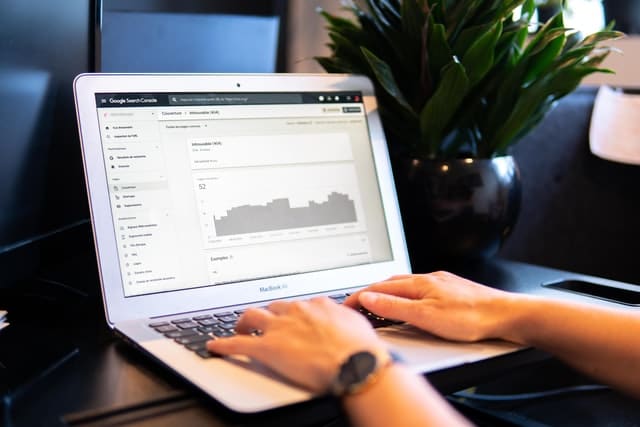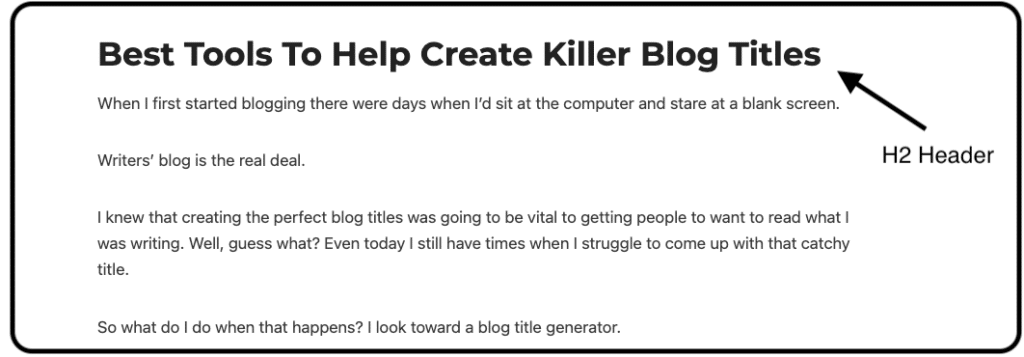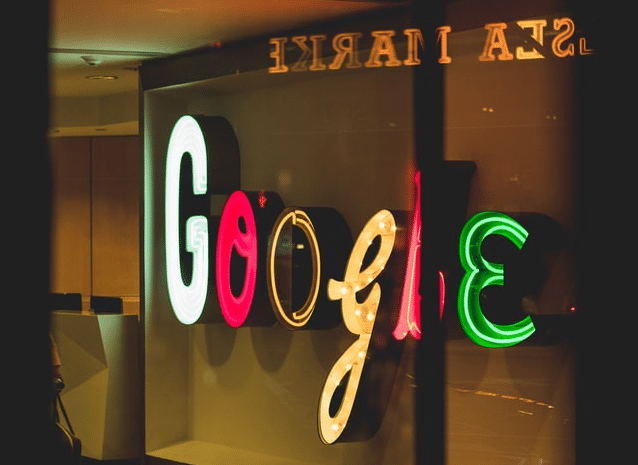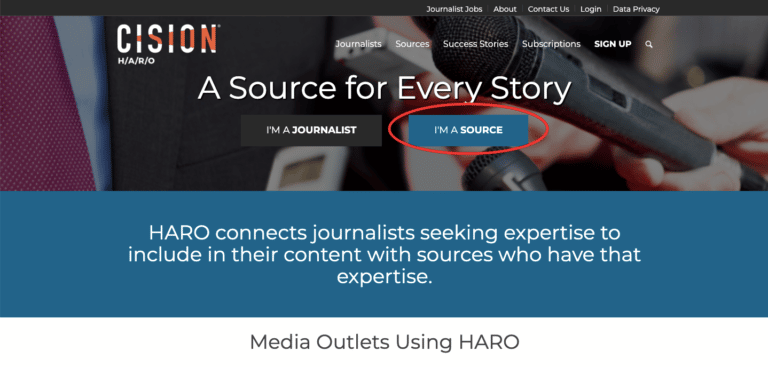As a website owner, you’re always looking for ways to improve your site and attract more visitors. One of the most important things you can do is to make sure your site is optimized for search engines.
This means using both on-page and off-page SEO techniques. But what exactly are on-page and off-page SEO? And is one better for your website than the other?
Let’s take a closer look at on-page SEO vs off-page SEO to find out.
What is On-Page SEO and How Does It Work?
Anyone who has ever tried to do a Google search knows that the order of the first page results is anything but random. In fact, there is a whole science behind getting a website to rank on the first page of search engine results pages (SERPs), and it’s called search engine optimization (SEO). SEO is the process of optimizing a website so that it will rank higher on Google. There are two main types of SEO: on-page SEO and off-page SEO.
An On-page SEO strategy is the process of optimizing individual web pages so that they will rank higher on Google. This includes things like choosing the right keywords, using those keywords efficiently throughout the content, and making sure the website’s structure is search engine friendly.
Pro Tip: Always remember that putting together quality content is always going to be the most important thing you can do. If you don’t write great content, the other on-page SEO work you do won’t be as valuable.

What is Off-Page SEO and How Does It Work?
Off-page SEO refers to all of the activities that you can do outside of your website to improve your rankings. This can include things like link building, social media marketing, and even something as simple as having good reviews from customers.
Basically, anything that you can do to make your website more visible and attractive to Google is considered off-page SEO.
And while there are a lot of different techniques that you can use, the goal is always the same: to get your website to rank higher in search results.
The Benefits of On-Page SEO
There are many benefits of on-page SEO, but some of the most important include:
- On-page SEO can help improve your website’s visibility in SERPs.
- On-page SEO can help attract more visitors to your website.
- On-page SEO can improve the user experience on your website.
The Benefits of Off-Page SEO
Off-page SEO focuses on link building and improving the overall authority of a web page. There are many benefits of an off-page SEO strategy, including:
- Improved rankings: One of the main benefits of off-page SEO is that it can help to improve your website’s SERP rankings within Google. By building links and improving your website’s overall authority, you can increase your chances of earning a top spot in the search results.
- Increased traffic: Another benefit of off-page SEO is that it can help to increase the amount of traffic that your website receives. By building links and improving your website’s rankings, you can attract more visitors to your site. That will ideally lead to more conversions for your business.
- Improved brand awareness: Off-page SEO can also help to improve brand awareness for your website. By building links and getting your website mentioned on popular websites and blogs, you can increase the visibility of your brand and get more people interested in what you have to offer.
How to Optimize Your Website for On-Page SEO – On-Page SEO Factors
Optimizing your website for on-page SEO can seem like a daunting task, but it doesn’t have to be. There are a few key things you can do to make sure your website is as search engine friendly as possible.
Title Tag
The title tag is one of the most important aspects of on-page SEO. It tells Google what your page is about. The title tag should be concise and descriptive, and it should include your target keyword.
In addition, the title tag should be unique to each page on your site. This helps Google understand which pages are most relevant to a given query.
Finally, the title tag should be placed within the <head> section of your HTML code.
Tip: If your website is built on WordPress, this can be done automatically with the Yoast plugin.

Meta Description
A meta description is a brief description of a webpage or piece of content. It is meant to give the reader an overview of what the page is about, and it usually appears in the SERPs underneath the title of the page.
Meta descriptions are not visible on the actual page itself; instead, they are part of the code that helps search engines index and rank pages. In essence, they are designed to help users find the most relevant results for their query.
While meta descriptions are not a ranking factor, they can still impact click-through rate (CTR), which in turn can influence ranking. Because of that, it’s important to ensure that meta descriptions are well-written and accurately reflect the content of the page.
Content
Have you ever heard the phrase, “content is king“?
Well, guess what? That is more true today than ever before.
One of the biggest on-page SEO factors is the content you write. It doesn’t matter if it’s a blog post or the content you write for a product page on your eCommerce site.
Producing quality content that’s useful to your readers and positions you as an authoritative source is important. User behavior is one of many ranking signals for Google.
Keyword Usage
Using the right keywords is important. They help search engines understand what the content is about.
However, keyword usage can be a fine art at times. You want to use your target keyword a handful of times throughout your article, but not too often. Keyword stuffing can actually hurt your on-page optimization.
You should also use related keywords to complement the others. For example, if you were writing an article on the best golf putters, your target keyword might be “best golf putters” but you would also want to use variations like “best putters” or “best putters for golfers“.
URL
Having a search engine friendly URL is a piece of on-page SEO. It should be short but also include your target keyword. It should also include dashes to separate words and not underscores similar to the URL of this article.
Do this…
on-page-seo-off-page-seo
Not this…
on_page_seo_off_page_seo
Headings
While all the content on a page is important to search engines, they put a greater emphasis on headers.
Headers are things like the H1 – H6 tags you place on the page. These are typically used to break up chunks of content and let readers know what a section is about.
Because Google thinks of headers as being important, make sure you include primary and secondary keywords within them.

Internal Linking
Internal linking is the process of adding links from one page on your website to another page on your website. This is done by adding hyperlinks to certain keywords or phrases.
Just one piece of advice when linking to keywords. You want to make sure you’re switching up the anchor text so that you’re using different variations of your target keyword.
When done correctly, internal linking can be an extremely powerful tool for showing Google which pages on your site are important.
Alt Text
Alt text is a code used in HTML that allows you to add text to an image. The text is then read by screen readers, which helps those with visual impairments to understand what is on the page.
Alt text can also be used for SEO purposes. It allows Google to have a better understanding of what the page is all about.
Overall, alt text is a useful tool that can help to make your web page more accessible and improve your SEO.
Structured Data
Something that is often overlooked in SEO is the role that structured data can play in improving a website’s ranking. In a nutshell, it’s code that is used to provide search engines with information about a page’s content.
For example, a food blog with a page that has a recipe might use structured data to indicate the ingredients, cooking time, and nutrition facts. By including this information in the code of the page, search engines can more easily understand the content and index it properly.
As a result, pages that make use of structured data are more likely to appear in search results.
While on-page SEO is still largely reliant on traditional techniques such as quality content and keyword usage, structured data provides an additional way to improve your website’s ranking.
Core Web Vitals
Core Web Vitals are a set of website performance metrics that measure three key aspects of user experience: load time, interactivity, and visual stability.
They were introduced by Google in May 2020 as part of the Page Experience Update, a broad algorithm update that also includes other important factors like mobile responsiveness and safe-browsing compliance.
The three Core Web Vitals metrics are:
- Largest Contentful Paint (LCP): measures loading time and is the time it takes for the largest element on a page to load.
- First Input Delay (FID): measures interactivity and is the time it takes for a page to become interactive after a user first interacts with it.
- Cumulative Layout Shift (CLS): measures visual stability and is the amount of unexpected movement of page elements.
These metrics are important because they help to measure the user experience on a website. And as we know, Google wants to provide its users with the best possible experience. As such, websites that have good Core Web Vitals scores are likely to see a boost in their SERPs.
Page Speed
When you hear the term page speed, someone is referring to how quickly a webpage loads. Over the past couple of years, Google has put a greater emphasis on page speed in SERPs.
Recent research from Google showed that 53% of mobile users will abandon a website that doesn’t load within three seconds.
There are a lot of on-page SEO factors that can affect page speed. Some of them include:
- Quality of code
- Image file sizes
- Site structure (including use of a CSS file)
- Minimizing HTTP requests
- Reducing server response time
- Enabling browser caching
- Gzip compression
- Use of a resource minification technique
- Putting CSS in an exterior stylesheet
- JavaScript placement
Mobile Responsive
A mobile responsive website is a website that has been designed to adjust its layout and content to best suit the viewing experience of the user, regardless of the device or screen size that they are using.
In other words, it provides an optimal viewing and interaction experience that is easy to read and navigate, without the need for zooming or scrolling horizontally. This is accomplished through a variety of design techniques, including fluid grids and layouts, images that resize automatically, and media queries.
As more and more people use mobile devices to access the internet, it has become essential for websites to be mobile responsive in order to remain accessible and user-friendly.
How to Optimize Your Website for Off-Page SEO – Off-Page SEO Factors
If you’re serious about getting your website to rank highly in search engines, then you need to pay attention to on-page SEO but also off-page SEO.
Off-page SEO are the actions you take outside of your website to improve your ranking, such as link building and social media engagement.
Backlinking
One of the most important pieces of off-page SEO is backlinking. A backlink is a link to your website from another website. Backlinks are also called “inbound links”.
Backlinks are important because they are a signal to search engines that your website is popular and relevant. When you get backlinks from high-quality websites, it tells Google that your site is worth showing to potential customers.
Getting backlinks can be challenging, but there are a few strategies you can use to get them.
- If you’ve put together a data-driven study or produced a really epic piece of content, you can ask bloggers in your industry to link to it.
- Guest blogging
- Become a guest on podcasts
- Broken link building
- Reach out to journalists through HARO to be a source for an upcoming story.
It’s important to note that not all backlinks are created equal. A link from a high-quality website will be worth more than a link from a low-quality website.
Additionally, the anchor text (the text that is linked) can also impact the value of the backlink. If the anchor text is relevant to your website, it will be worth more than if the anchor text is not relevant. Make sure it helps the reader understand what the page is about if they were to click through.
Remember the end goal is to make sure the reader has a good user experience.
Social Shares
Social shares are a great way to increase the visibility of your content. The more people that share your content, the more likely it is to be seen by potential customers or clients.
Plus, social shares are a good way to build relationships with other businesses in your industry. When you share someone else’s content, they are more likely to return the favor.
When I scratch your back, hopefully, you’ll scratch mine back.
This can help to create a mutually beneficial relationship that can result in increased traffic and brand exposure for both parties.
Finally, all of this adds up to social shares being a great way to improve your search engine ranking. Google and other search engines take into account the number of social shares when determining where to rank a piece of content.
Domain Authority
Domain Authority (DA) is a search engine optimization metric developed by Moz. DA can be used to predict how well a website will rank on search engine result pages (SERPs). A higher DA indicates a better chance of ranking higher on SERPs. The lowest DA is 1 and the highest is 100.
There are many factors that contribute to a website’s DA including age, size, and popularity. Moz uses data from their Mozscape web index to calculate DA. The Mozscape web index is one of the largest indices of the web and contains over 150 trillion links.
Having a high DA is important for SEO because it increases the chances of ranking higher on SERPs. It is also a good indicator of the quality of a website. Sites with a high DA are more likely to be trusted by Google and other search engines.
Brand Mentions
Google is always changing how they evaluate websites. There might come a time when backlinks no longer carry the weight they do today.
If and when that day comes, simple brand mentions might be the next big thing for SEO.
So what do I mean by brand mentions? It’s simply a mention of your brand or URL on another website where they don’t actually include a hyperlink.
Today, as long as backlinks are still important, you can use brand mentions as a way to build backlinks. If you find a website that mentions your company or blog, reach out and ask them to include a link as well.
Which is Better For Your Website, On-Page vs Off-Page SEO?
On-page SEO and off-page SEO are both important for any website that wants to rank high on Google.
So, which is more important? The answer is both. On-page SEO is important because it helps Google understand what your website is about. Off-page SEO is important because it helps search engines see that other websites feel you’re authoritative in your niche.
Because both are important, you need to focus on both on-page SEO and off-page SEO in order to have a successful website that ranks highly in search engine results. By optimizing your website for both on-page and off-page SEO, you can ensure that your website will be visible to potential customers.
The Bottom Line
In conclusion, on-page SEO and off-page SEO are both important for any website that wants to rank well in search engine results. On-page SEO helps search engines understand your website, while off-page SEO helps search engines see that other websites trust you as an authoritative source. Both on-page and off-page SEO are necessary for a successful website.






